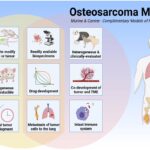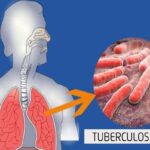
Childhood illnesses are very sensitive. Every child should receive quality medical care. It is every parent’s responsibility to be better informed about some of the most valid and recent treatment guidelines, making sure your child receives the best possible care.
The following information from the American Academy of Pediatrics summarizes some of the most common childhood illnesses together with their approved treatments. The information discussed here is based on the best scientific evidence and practice.
Table of Contents
For example, if your child has a chronic medical condition or an allergy, your pediatrician may give you different recommendations. Your pediatrician will share these variations in treatment with you. If you have any questions about proper care for your child, discuss these with your pediatrician.
1- Sore Throat (Among common Childhood Illnesses)
Children develop sore throats, which are very sore. However, a viral cause of a sore throat does not need antibiotics. In those cases, no special medicines are necessary, and your child should recover in seven to ten days. In other cases, a sore throat is caused by streptococcal infection, a condition referred to as strep throat.
If strep is to be confirmed with absolute certainty, it can only be done with some form of test. It cannot be diagnosed based on observation alone- although your child may have a sore throat; a lab test, or in-office rapid strep test, will need to be administered to confirm the condition-it only takes a fast swabbing of the throat. If your child tests positive for strep, your pediatrician will prescribe an antibiotic. Your child must complete a full course of antibiotics, as prescribed, even if symptoms improve or resolve. Steroid medicines, such as prednisone, are not recommended in a large majority of cases as a treatment for sore throats.
Babies and toddlers rarely develop strep throat, although their chances of becoming infected by streptococcus are higher if they attend childcare or have an older sibling suffering from the illness. Although strep is primarily spread by coughs and sneezes, your child can also contract it by touching a toy that an infected child has used.
2- Ear Pain (One of the Childhood Illnesses)
Ear pain is very common in children, and the cause can be many: from infection of the middle ear (otitis media), to the swimmer’s ear (infection of the skin in the ear canal), to pressure stemming from a cold or sinus infection; even hurtful teeth can radiate pain up the jaw to the ear.
The only way to determine which of these is present and to make a positive diagnosis is to have your pediatrician listen with his or her otoscope for fluid behind your child’s eardrum or redness in the Eustachian tube. An in-office exam is still the best way for your pediatrician to make an accurate diagnosis. If your child’s ear pain is accompanied by a high fever, involves both ears or if your child has other signs of illness, your pediatrician may decide that an antibiotic is the best treatment.

Amoxicillin is the first-line antibiotic in the treatment of middle ear infections except for patients with penicillin allergy or chronic or recurrent infection.
Most actual ear infections are brought on by viruses and don’t need antibiotics. If your pediatrician thinks your child’s ear infection might be due to a virus, he or she will talk to you about the best ways to help end your child’s ear pain until the virus works its way out of their body.
3- Urinary Tract Infection (Major Childhood Illnesses)
A bladder infection or urinary tract infection, UTI, is when the bacteria accumulate within the urinary tract and cause infections. You can diagnose UTIs in children from infancy into their teenage years and eventually well into adulthood. The symptoms of a UTI include pain while urinating or burning pain while urinating, frequent urination or sudden urgency to urinate, bedwetting by a potty-trained child, or having accidents, abdominal pain, or side or back pain.
The doctor will require a urine sample to test for the presence of a UTI before deciding on the treatment. Your doctor may modify the treatment based on what bacteria is present in your child’s urine.
4- Skin Infection (Very common Childhood Illnesses)
A skin test usually becomes necessary in the case of most children with a skin infection to define the best treatment. Therefore, inform your doctor if your child has a history of MRSA, staph infection, or other resistant bacteria or if he or she has been exposed to other family members or contacts with resistant bacteria.
5- Bronchiolitis
Bronchiolitis is a common complaint in infants and young children during the cold and flu season. “Wheezing” is often what your doctor will hear when she listens to your child’s breath.
Bronchiolitis mostly results from a viral cause, for which the patient does not need antibiotics. Most of the treatment recommendations are given to make your child comfortable with close follow-up for any difficulty in breathing, eating, or dehydration. Medications to patients suffering from asthma like albuterol or steroids are not used for most infants and children suffering from bronchiolitis. Other treatment is necessary in children born prematurely or those with other conditions.
6- Bronchitis
This is known as chronic bronchitis. This is a common infection of the larger, more central airways in the lung and tends to be more common in adults. Often the term “bronchitis” is used to describe a chest virus that does not need antibiotics.
7- Common Cold (Among simple Childhood Illnesses)
Colds are viral infections of the upper respiratory tract. Many young children, especially in child care, can get 6 to 8 colds per year. Symptoms of a cold—such as runny nose, congestion, and cough—can last as long as ten days.
Green mucus in the nose doesn’t necessarily mean antibiotics are required it’s never needed for a cold, however, if you suspect there’s a sinus infection, your pediatrician will use your child’s symptoms and a physical exam to decide on the best antibiotic treatment.
8- Pain

Acetaminophen or ibuprofen could be the best pain relievers for children. Recommend it to your pediatrician, though because its dose should be according to your child’s weight.
Narcotic pain medications certainly should not be used in children with common injuries or complaints such as sprained ankles, ear pain, or sore throats. Codeine should never be used on children. It has been associated with severe respiratory problems and even death in children.
9- Cough (Common Childhood Illnesses)
In the main, coughing is generally considered due to viruses and not a condition warranting the administration of antibiotics.
Cough medicines are not to be administered to children 4 years of age and younger except for children 4 to 6 years of age unless your doctor orders. Research has continuously revealed that cough medicines are ineffective in children with an age below 4 and that some can cause severe side effects. Medications that contain narcotics, such as codeine, should never be given to children.
10- Bacterial sinusitis
Sinusitis is suspected when cold-like symptoms like nasal discharge, daytime cough, or both last more than ten days without improvement. If this condition also has a thick yellow nasal discharge and the fever persists for at least 3 or 4 consecutive days, then antibiotics might be necessary.
If the signs and symptoms get worse:
Sometimes, what appears to be a relatively minor viral or bacterial infection will spread and worsen.
Discuss your child’s illness with the pediatrician if it gets worse, if you think it is worsening, does not get better in a few days, or if you have new concerns and new symptoms that could be emerging. If the treatment for your child’s illness has failed or your child is developing complications, your pediatrician may prescribe a new treatment.
Need more information or Have Questions?
If you have any concerns or questions regarding the proper care of your child, ask them when you see your pediatrician. It might seem like an easy thing to do when bringing your little one into a walk-in after-hours clinic when the little one becomes ill, but your pediatrician is your child’s advocate and has access to the medical record of your child. Your pediatrician can advise you how he or she would prefer to be reached when the office is closed.

Conclusion
In a nutshell, childhood illnesses are, therefore of paramount importance for parents and caregivers to know them well to take good care of their children. The common childhood illnesses include such symptoms as the common cold, ear infections, strep throat, and respiratory syncytial virus (RSV). It may lead to full-fledged symptoms of childhood illnesses if the problem occurs in any of the mentioned areas above. Early recognition makes it possible to act promptly, very crucial for proper treatment and cure.
The prevention of such diseases is a concern in most families. Detailed information regarding how to prevent childhood illnesses will reduce the risk of infection through certain key practices that include good hygiene practices, regular hand washing, and avoiding close contact with those infected. Vaccinations also play a very significant role in preventing serious childhood diseases by providing children with immunity against infections that may cause serious complications.
Also, leading a healthy life assists in building up immunity of a child. Bringing encouragement for well-balanced dieting rich in fruits and vegetables, ample sleep, and enhanced physical activities throughout the day can better the general health, with a stronger immune system against most diseases.
Knowing the various kinds of childhood diseases, their symptoms, and ways of preventing them aids a parent in protecting his child’s health. Routine checkup by health care providers also allows for monitoring of children’s development. This will in turn help address any health issues at an early stage. In the short term, therefore, a culture of awareness and prevention would be empowered to know the best practices on how to tackle the problems with childhood diseases while enabling a healthy future for their children.
Disclaimer
In this article, information related to a particular topic has been collected from various sources, the purpose of which, is only to increase the knowledge of the readers and it does not confirm the existence of any disease, particular statement, explanation, appropriateness, congruity, and information or any kind of treatment. Health Alpha does not take any responsibility for any such information.
Views: 4














Pingback: The Marburg Virus-Emerges in 2024. Just alert about it.
Pingback: Diaper Rash-10 remedies. Don't get delay. You will surprise